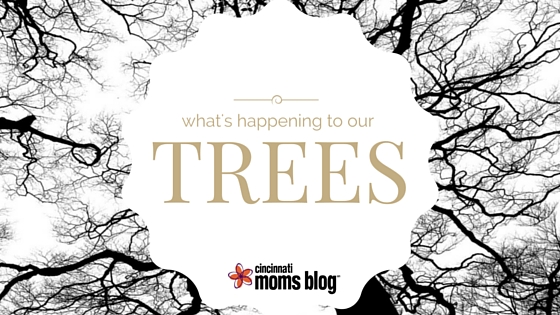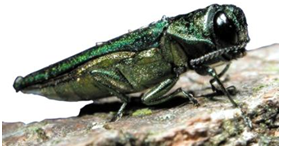 It’s the time of year when all eyes are on the trees. The hillsides turn into a lush green comforter covering the sides of the freeways and rivers. It’s one of our area’s best assets – more than one-third of the region is covered in forests, making the Tri-State area one of the nation’s most canopied metropolitan areas.
It’s the time of year when all eyes are on the trees. The hillsides turn into a lush green comforter covering the sides of the freeways and rivers. It’s one of our area’s best assets – more than one-third of the region is covered in forests, making the Tri-State area one of the nation’s most canopied metropolitan areas.
Now imagine what those hillsides would look like with nearly half of the trees gone. It sounds shocking, but sadly, it’s what’s happening due to invasive species such as the emerald ash borer, disease, development and invasive plants such as bush honeysuckle. It’s estimated that we’ll lose up to 40 percent of our canopy in some areas due to the emerald ash borer alone. If you look closely at the trees alongside the freeways, you’ll see that many of them aren’t budding. There’s a good chance they are dead ash trees.
The potential impact of this canopy loss goes beyond aesthetics. A recent report revealed that Cincinnati has some of the worst air pollution in the country. Yikes, right? This air pollution can impact our kids’ health by increasing the chance for respiratory-related conditions such asthma and bronchitis. Trees help offset pollution by removing carbon dioxide from the air and returning fresh oxygen as a byproduct.
In the environment, trees mitigate the impact of storm water runoff and soil erosion, even as they make oxygen and create forage and habitat for wildlife. This means our hillsides stay intact and it limits opportunities for mudslides and flooding.
Economically, trees reduce energy consumption, increase business traffic and raise property values. Trees also improve the human condition. Recent studies have found that people recover faster in hospital rooms that overlook trees. Crime is lower in neighborhoods with tree canopy.
Our canopy is thinning at a substantial rate and Taking Root, a regional reforestation campaign, wants to offset this loss by planting one tree for every citizen in the Tri-State area (that’s two million trees) by 2020. We have a long way to go, but thanks to the dedication of several individuals along with private and public and organizations, it’s happening.
If you want to make sure your children and your children’s children get to witness the beautiful canopy of our area – what can you do?
- Plant a tree in your yard and register it at http://www.takingroot.info/join-in/registree/.
- This spring, make sure your trees are properly cared for by avoiding harmful activities such as volcano mulching.
- Volunteer for a tree-planting event.
- Talk to your kids about the trees and the emerald ash borer.
- Follow Taking Root on Facebook to learn more about native plant and tree species to our area or sign up for their newsletter.
- Educate yourself on the issue. This article from Cincinnati Magazine provides a great look at the implications of the emerald ash borer.
As Dr. Suess wrote in the Lorax, “I speak for the trees, for the trees have no tongues.”














The trees are indeed dying, but not just here, and not just from leaf borers or other common diseases. On any day, any season, just look up. Do you see the streaks of strange-looking “clouds”? Do you see jets spewing out what looks like condensation trails, but notice that the trails stick around, for hours and hours, throughout the day, spreading to form a sometimes striped, sometimes wavey, sometimes blotchy sky covering? The planes are spraying small aluminum particles, sometimes mixed with barium, strontium, and other chemicals. The official word is that these toxic chemicals are being used to help weather change”, but when the chemicals hit the ground after a rain, the trees suck them up, and that slowly prevents the trees from sucking up the nutrients essential to their growth, and the result is what you see. Hundreds of dead and dying trees lining the highways, and in our woods, and on our lawns. Find out more at “geoengineering.com”, and it will shock you!
Seems the website is unreachable now. Try “educate-yourself.com